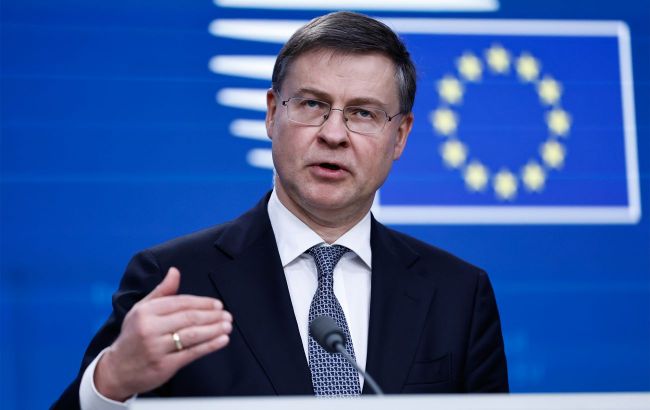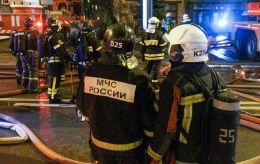US supports new IMF program for Ukraine and EU reparations loan
 Photo: Valdis Dombrovskis (Getty Images)
Photo: Valdis Dombrovskis (Getty Images)
The United States has expressed support for IMF and European Union initiatives aimed at financing Ukraine using frozen Russian assets, stated EU Commissioner for Economy Valdis Dombrovskis, according to Reuters.
Support from the United States
Dombrovskis noted that Washington views positively the idea of a new IMF lending program for Ukraine, as well as the EU initiative to provide a reparations loan.
"There is now constructive engagement from the U.S. side as regards questions related to Ukraine support," Dombrovskis said.
According to Dombrovskis, the US supports and welcomes the initiative on the reparations loan.
Negotiations in Washington
The EU Commissioner held talks with US Treasury Secretary Scott Bessent on Thursday during the annual IMF and World Bank meetings in Washington.
However, Dombrovskis clarified that the US does not yet have a clear position on participation in the European Reparations Loan project.
"At this stage, there is no clear positioning on the US side on potential action which they would take concerning the immobilized Russian assets on US territory," Dombrovskis said.
Frozen assets and their use
According to the European Commission, around $5 billion is blocked in the US, while in Europe, the total is approximately €210 billion.
These funds are expected to be used to finance credit support for Ukraine's reconstruction and economic stabilization.
The EU is already discussing a mechanism to mobilize these funds as part of a long-term reparations loan to Ukraine.
The role of the IMF and the US position
Dombrovskis emphasized that Washington's support is also crucial for the IMF, as the Fund typically does not lend to countries at war.
To approve the program, the IMF must have sufficient guarantees for repayment.
"On the IMF program, this we discussed both bilaterally, but also it was raised at the G7, and the US was, generally speaking, supportive of the IMF program," Dombrovskis said.
According to the Financial Times, the EU proposed using part of the €140 billion reparations loan, secured by frozen Russian assets, to purchase American weapons for Ukraine.

